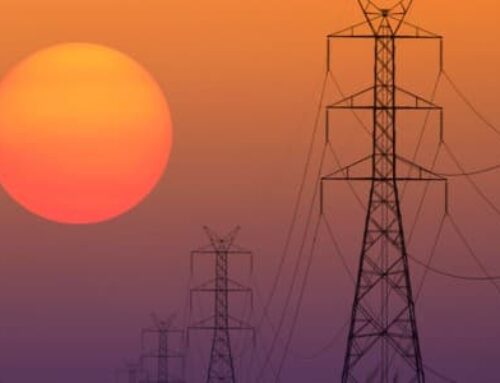18 States Sue Trump Administration Over Wind Energy Project Freeze, Citing Billions in Cle
May 8, 2025
The U.S. wind energy sector is at a key point. Eighteen states, with New York in the lead, have sued the Trump administration. This lawsuit comes after a halt on offshore wind projects.
The lawsuit claims that stopping permits is illegal. It threatens job growth and blocks important progress in clean energy. This legal challenge will greatly affect the future of renewable energy in the U.S. The need to fight climate change is becoming more urgent.
The Legal Challenge: States Unite Against the Trump Administration
Eighteen states have come together to challenge the Trump administration. They are opposing the recent pause on wind energy project permits, especially for big projects like Empire Wind. Advocates say the legal challenge is vital. It’s key for both renewable energy progress and the economic health of the states involved.
New York’s Attorney General Letitia James remarked:
“This administration is devastating one of our nation’s fastest-growing sources of clean, reliable, and affordable energy. This arbitrary and unnecessary directive threatens the loss of thousands of good-paying jobs and billions in investments, and it is delaying our transition away from the fossil fuels that harm our health and our planet.”
The lawsuit highlights key issues. States say the pause disrupts project timelines. This leads to higher financing risks and job losses in clean energy sectors. The states, including strongholds like California and Illinois, say they need quick action.
They want to fight against the federal interference’s negative effects. They highlight how it harms investments meant for job creation in renewable energy industries.
The states say the Trump administration’s choice shows wider policy issues. They warn this could harm the U.S. competitive edge in the global clean energy market. They think the administration is delaying important wind energy projects. This could hurt the country’s chances of meeting its climate goals.
The Global Wind Energy Council (GWEC) reports that global offshore wind capacity exceeded 75 GW by the end of 2023. Europe and China are at the forefront of this growth.
China alone installed nearly 5 GW of offshore wind in 2023, reflecting its aggressive expansion into clean energy markets. In contrast, the U.S. has under 50 MW of operational offshore wind power. This highlights how permitting delays widen the competitive gap.

Impact on Job Growth and Clean Energy Development
The wind energy sector currently supports over 120,000 jobs nationwide and generates approximately 10.2% of the country’s electricity. As of Q4 2023, the U.S. boasts more than 145 GW of installed wind capacity, yet the halt on permitting threatens to stifle this growth.

Analysts say the pause might cause a loss of about $2.6 billion in the affected states. If the freeze continues, it could endanger jobs in the wind sector. Many related jobs in construction, manufacturing, and engineering are also at risk.
Offshore wind projects may take time to develop, but they offer great chances for job creation and economic growth. Current estimates show over 40 GW of announced offshore wind capacity. This signals a growing industry that attracts multinational investments.
Top companies like Ørsted, Equinor, and BP are already making their mark. They boost local economies by improving infrastructure and creating jobs.
The U.S. Department of Energy (DOE) estimates that developing 30 GW of offshore wind capacity by 2030 could create up to 77,000 jobs and reduce 78 million metric tons of carbon emissions.
Moreover, the National Renewable Energy Laboratory (NREL) says offshore wind could provide up to 2,000 terawatt-hours (TWh) of electricity each year. This amount is about 50% of the total U.S. electricity use in 2023.
The states’ legal challenge shows the need for a stable permitting process. This stability is crucial for the wind sector to grow effectively. Analysts predict that the industry will have the following growth trajectory.

Global Race Heats Up as U.S. Stalls Offshore Wind
The current landscape for U.S. wind energy is marked by substantial uncertainty due to the halting of project permits. Offshore wind investment is expected to top $100 billion by 2035. This could create around 83,000 new jobs. However, ongoing federal chaos could push investors to seek safer markets in Europe and Asia.
According to BloombergNEF, global investment in offshore wind hit a record $76.7 billion in 2023, with Europe capturing over 45% of this total. Meanwhile, U.S. offshore wind investment was just over $4 billion last year. This shows how policy inconsistencies slow down capital compared to other countries.
Despite the inherent challenges, the fundamentals of the U.S. wind energy sector remain strong. The current project pipelines, worth billions, show a strong demand for renewable investments. This is especially true in the Northeast.
The ACP says a clear permitting process is key. It helps restore investor confidence and re-establishes the U.S. as a leader in clean energy innovation.
Coastal local economies are eager for offshore wind projects. They hope these initiatives will boost growth in shipbuilding, port construction, and turbine manufacturing. The Business Network for Offshore Wind states that more than 1,500 U.S. companies are in the offshore wind supply chain.
However, permitting freezes could slow down the growth of this ecosystem. The delay in permits, along with ongoing uncertainty, slows progress. This may hurt statewide energy goals that aim to cut emissions and boost economic growth.
Winds of Change: What’s at Stake for U.S. Climate Goals
As the legal proceedings advance, the battle over wind project permitting encapsulates broader conflicts surrounding energy policies in the United States. This state lawsuit’s outcome could set a key precedent. It may impact not only wind energy but also the entire clean energy sector in the future.
The stakes are high, and as climate actions intensify globally, the U.S. must resolve its policy inconsistencies to keep pace. This legal challenge affects more than just energy projects. It ties into national goals from the Paris Agreement and the move towards net-zero emissions.
The former Biden administration aimed for 100% carbon-free electricity by 2035. It also targeted net-zero emissions across the economy by 2050. Offshore wind is key to meeting these goals. The federal plan aims for at least 30 GW of offshore wind by 2030 and 110 GW by 2050.
Stakeholders are watching closely, hoping for a resolution that allows for the swift restoration of permitting processes. The Trump administration will need to navigate these challenges carefully as it strives to restore investor confidence and ensure a sustainable future for renewable energy.
Search
RECENT PRESS RELEASES
Related Post



